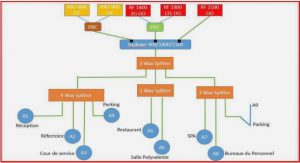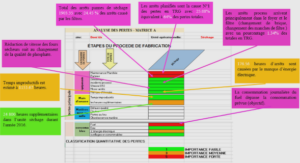Different Methods of Measuring the Respiratory Rate
Respiratory parameters are important for research in healthcare monitoring. The respiratory rate, which is defined as the number of breaths per minute, is an essential physiological parameter in abnormal breathing diagnosis. Therefore, many systems have been developed for respiratory rate measurements. These systems are mainly based on three kinds of methods: thoracic/abdominal expansion measurement, impedance pneumography and airflow breath measurement. The first method is based on the fact that the thorax and the abdomen expand and retract with every breath. By measuring the frequency of this expansion/retraction, it is possible to measure the rate at which a person breathes. Over the years, researchers have proposed multiple methods to measure this expansion/retraction. Some researchers have used a mercury filled elastic straingauge (Silastic™), whose resistance is sensitive to changes in length. By wrapping this elastic around the torso, the breathing rate can be measured. However, as mercury is a hazardous material, mercury-filled strain gauges are rarely used today. In recent years, wearable sensorbased health monitoring devices, such as BioHarness™ 3 Chest Strap and Hexoskin™ smart shirt have appeared on the market. While they could provide accurate respiratory rate, their relative high costs make them less appropriate for monitoring of a large number of patients. Similarly, Tuomas Reinvuo et al. from the University of Oulu have created a sensor belt with a high-resolution accelerometer and an electromechanical film (EMFit) pressure sensor to measure respiratory rate. Results show that the sensor belt is a portable and accurate tool for respiratory rate measurement. However, the system is only suitable for the immobile testing. The second technique, known as impedance pneumography, is based on the fact that air causes a change in electrical impedance in the lungs. Therefore, by measuring the rate of change in impedance in the lungs, it would be possible to determine the breathing rate. To use this approach, either two or four electrodes are attached to the chest. The impedance in the thorax can be divided into two components: a relatively constant baseline impedance R? and a varying respirative impedance ∆R. During inspiration, the increase in gas volume of the chest and the expansion of the thorax cause ∆R to increase. The relationship between the total impedance(∆R+R?) and the volume of air in the lungs is approximately linear. If electrical current was applied to the electrodes during the breathing process, the change in impedance (∆R) will result in a change in voltage (∆V). To perform breathing rate measurement, a possible approach is to inject a high-frequency AC current into the body through the electrodes. The third type of approach used in respiration measurement consists of measuring the air exhaled. For this approach, it is customary to use a face mask to either measure the air displacement or the change in temperature due to respiration. Dodds et al. proposed the use of a pyroelectric polymer (PEP) film as a transducer for respiratory rate measuring. The PEP film is a material that generates a voltage when its temperature or pressure is changed (pyroelectric effect). In their proposed system, the material is mounted to the internal surface of a standard oxygen face mask. The voltage variation, caused by the change in temperature during respiration, is sent to an ADC after signal processing. Results show that the PEP film is a low-cost and reliable transducer for respiratory rate monitoring. The major disadvantage with this approach is the use of a face mask which may cause discomfort in many participants and the need daily maintenance for proper hygiene.
Oxygen Saturation and Major Analytical Methods
Oxygen transport is important in sustaining human life. Hemoglobin is a protein that is capable of carrying and releasing molecular oxygen (?2) in erythrocytes (red blood cells). Hemoglobins can be divided into oxyhemoglobin (?2?? ?? ???2 ) and deoxyhemoglobin (??? or ??), according to whether they are fully saturated with oxygen or not. Most of the hemoglobin in human blood is either in the form of ?2?? or ? . For new born babies with certain respiratory problems and patients under anesthesia, their blood oxygenation needs to be monitored since they are unable to breathe on their own. It is important to determine whether they are absorbing the necessary amount of oxygen supplied by ventilators. Similarly, for patients with certain respiratory problems, such as COPD, oxygen absorption could fall to dangerously low levels. Therefore, the assessment of oxygen saturation (S?2) a parameter that indicates the ratio of the oxyhemoglobin over both oxy and deoxyhemoglobins, provides a valuable indictor in respiration monitoring.
Pulse Oximetry Theory Review and Calibration Approach
Pulse Oximetry Theory Review
Pulse oximetry is a noninvasive method of continuously assessing arterial oxygen saturation (SpO2 or SaO2) and the pulse rate of a patient. It is widely prevalent in health care and is often regarded as the fifth vital sign after body temperature, pulse rate, respiration rate and blood pressure. By measuring light absorption at a well-perfused body area (finger, ear lobe or nasal alar) with two different wavelengths (red and infrared), it assesses the SpO2 and the pulse rate.
The general principle of pulse oximeters is explained as follows. According to the optical properties of ?2?? and ???, the absorption of ?2?? and ??? at red and near-infrared (IR) light are significantly different. ??? allows more IR light (940 nm) to pass and absorbs more red light (660nm), while ?2?? behaves in the opposite way. This is in accordance with the fact that well-oxygenated blood with higher concentration of ?2?? often appears redder to the eye than poorly-oxygenated blood.It is also important to note that the body tissues do not typically attenuate the optical signals at these two wavelengths whereas yellow, green, blue, and far- IR light signals are significantly absorbed by vascular tissues and water.
Limitations of the Beer-Lambert Model and Calibration Approach of Commercial Pulse Oximeter
In the Beer-Lambert model, the arterial blood is treated as a homogeneous absorbing medium. In real situations, the absorbance of light is not simply proportional to the concentration of hemoglobin or to the optical path length but are also dependent on scattering and multiple scattering. This phenomenon can occur when light is refracted by a similar-sized object to the wavelength of the light, as in the case of red/IR light having the same size wavelength as red blood cells (approximately 7 µm in diameter). Scattering causes the deviation of a light beam from its initial direction and therefore, highly increases light absorbance. In addition, light that is scattered once will likely be scattered again by cells and therefore multiple scattering occurs.
Therefore, the Beer-Lambert model can’t be applied directly to the SpO2 calculation in pulse oximetry. As the process of mathematically modeling the problem of light scattering for different conditions is very complex, most commercial pulse oximeters use calibration curves from empirical formulas to determine the SpO2. This method provides SpO2 values that are accurate enough for clinical use.
Overview of Commercial Pulse Oximeters
With recent technological advancements and increasing interest in physiological measurements, low-cost pulse oximeters have become widely available on the market. Wireless portable pulse oximeters have also emerged, such as the health Air PO3 and the Massimo MAS-9809. In these products, the measured SpO2 and heart rate are transferred to Apple iOS or Android devices with their customer application programs via Bluetooth LE connectivity. These devices can be very useful in typical situations. However, in this project, the wireless pulse oximeter is used together with the wireless respiration belt to monitor the patient’s physiological parameters. Hence, to synchronize the data, the pulse oximeter needs to be compatible with the already designed wireless respiration belt. Unfortunately, the wireless communication standard used by the commercial pulse oximeters on the market (Bluetooth LE) could not interface with the XBee wireless module that was used in the designed respiration monitoring system. Meanwhile, designing a new pulse oximeter in the project could also pave the way for more integrated measurements systems. For example, researchers have demonstrated the possibility of detecting respiratory signals in plethysmograms obtained from pulse oximeters. With a modified pulse oximeter, it would be possible to measure the three-aforementioned key physiological parameters using a single piece of equipment.
|
Table des matières
1. Introduction
1.1 Background
1.2 Objectives and Scope of the Project
2. Literature Review
2.1 Different Methods of Measuring the Respiratory Rate
2.2 Oxygen Saturation and Major Analytical Methods
2.3 Pulse Oximetry Theory Review and Calibration Approach
2.3.1 Pulse Oximetry Theory Review
2.3.2 Limitations of the Beer-Lambert Model and Calibration Approach of Commercial Pulse Oximeter
2.3.3 Pulse Oximetry Signals for Heart Rate Measurement
2.3.4 Overview of Commercial Pulse Oximeters
3. Methodology and Design Procedure
3.1 Methodology
3.2 Initial Instrument Design for Respiratory Rate Measurement
3.2.1 Instrument Design Requirements
3.2.2 Instrument Design Method
3.2.3 Respiratory Sensor Belt Development
3.2.4 Microcontroller and Hardware Design
3.2.5 Software Design
3.3 Initial Design of the Pulse Oximeter
3.3.1 Hardware Design and Components Selection
3.3.2 Algorithm and Software Implementation
4. Experiments and Results
4.1 Respiration Rate Monitor System Test
4.1.1 Material and Method
4.1.2 Testing Results
4.2 Pulse Oximeter Test
4.2.1 Material and Method
4.2.2 Testing Results
5. Conclusion and Future Work
![]() Télécharger le rapport complet
Télécharger le rapport complet






